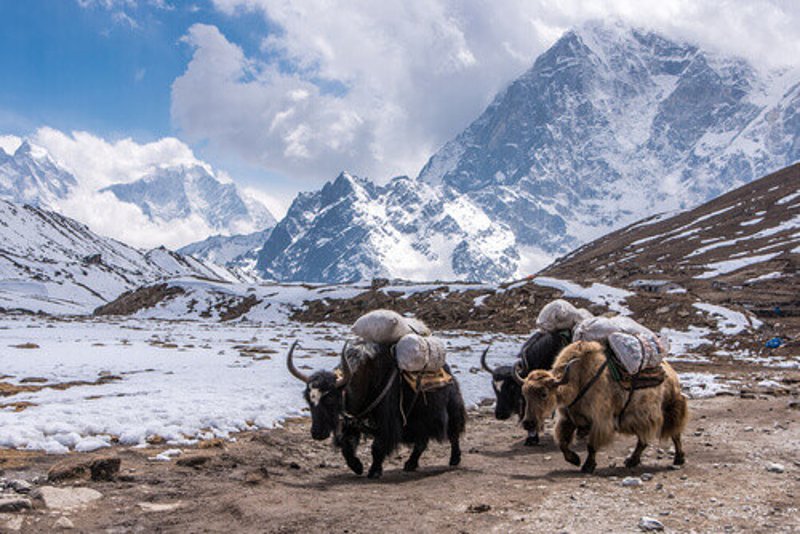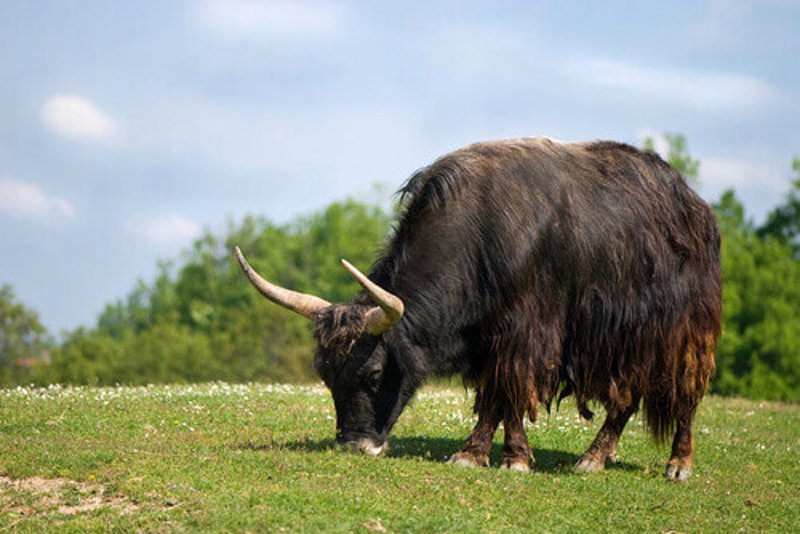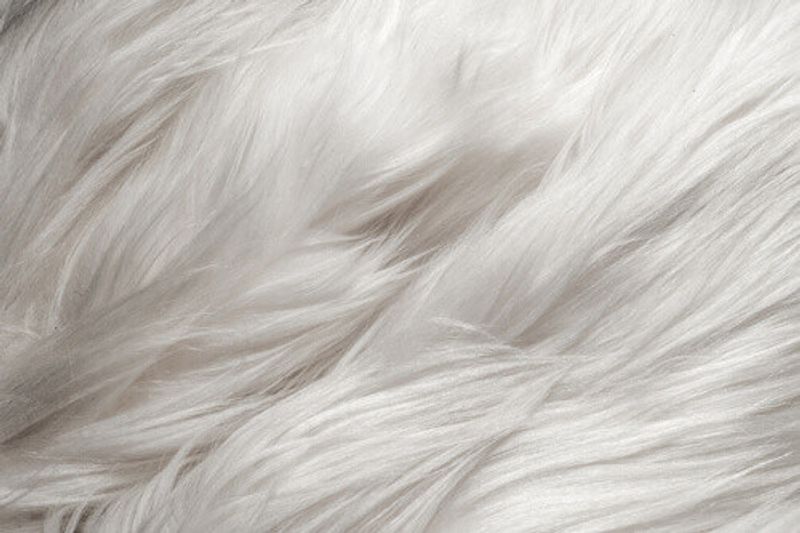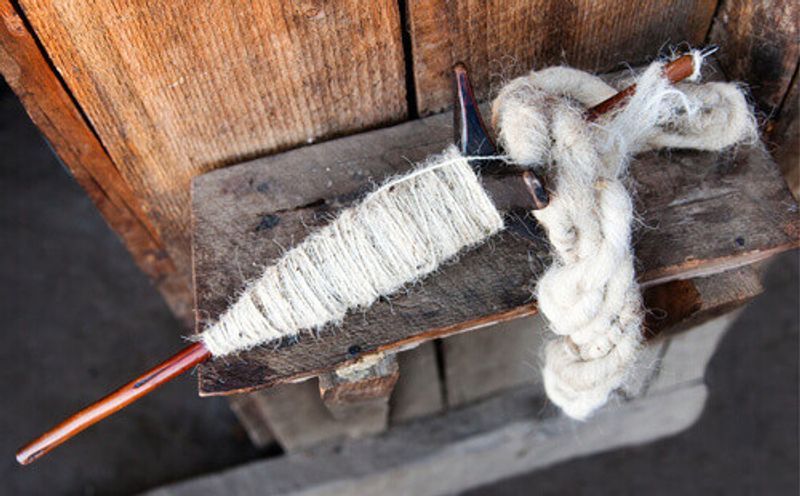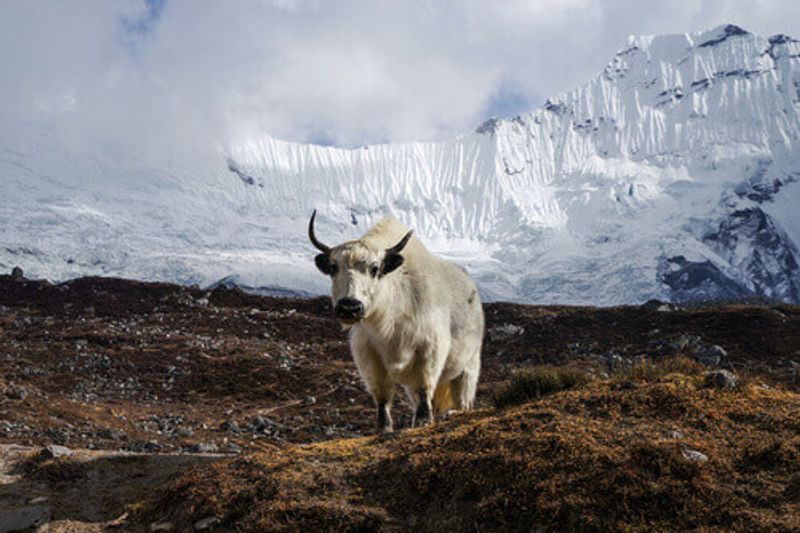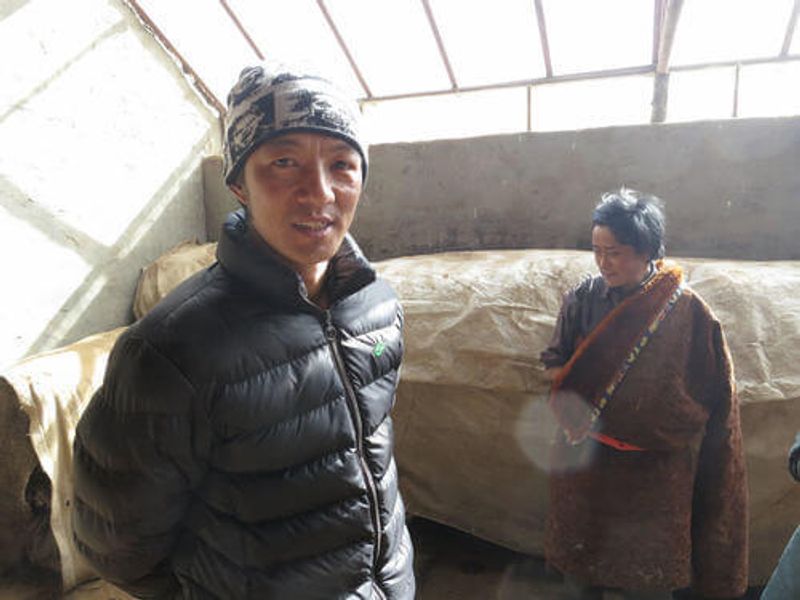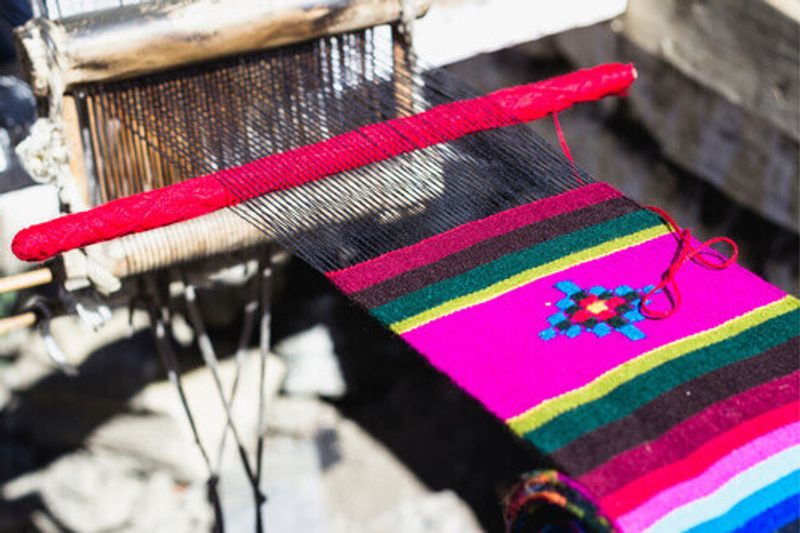Yak herder Dorjee Tsering and Yak knitwear maker Julian Wilson give us the lowdown on these Himalayas animals
Yaks are bovines – part of the cattle family – and are native to the Himalayas. They only live at high altitudes and provide wool and milk for local herders. They are also used as plough animals or load carriers and occasionally their meat is used as food.
Two people who have spent their careers working with yaks are Dorjee Tsering, a yak herder from the Tibetan plateau, and Julian Wilson who has been visiting the Himalayas to source yak wool for knitwear company, Khunu, for more than a decade.
What are yaks used for?
Dorjee Tsering (DT): Yaks have always been central to the Tibetan way of life. We use their milk and meat for sustenance, their fibre for making tents and clothing, and of course the animal is a great beast of burden capable of carrying considerable weight over distance.
What do yaks eat?
DT: Yaks eat grass much like other bovines, as well as mosses, lichens and tubers that are found on the plateaus.
Why is yak hair better than other animal hair?
Julian Wilson (JW): Yak is one of the warmest fibres out there, and it’s also incredibly soft. Being naturally anti-microbial it doesn’t need constant washing, and it wicks and breathes very well, meaning it’s extremely comfortable to wear. These characteristics make it highly suited to warm, comfortable winter clothing and accessories.
What is the best type of yak wool?
JW: The best fibres are the finest and the longest. Longer fibres mean higher quality yarns can be spun, and the fineness is a major contributor to comfort, as fine fibres don’t itch.
Where do the best yaks live?
DT: The best fibre comes from yaks living at higher altitudes and in colder climates. The harsher conditions create more down fibre, which acts as the insulation under the coarser guard hair.
What time of year do you collect the yak hair?
DT: Yak hair is normally collected when they start to shed, from mid-May through until the end of July. This can vary a little depending on climatic conditions.
What is the process of harvesting and processing yak wool?
JW: Yaks begin shedding their winter coats in late spring, so the process of collecting the fibre is a very natural and sustainable one. The best method of collection is to comb the yak with a special comb, although often herders will just pick the fibre off the animal as its sheds. The fibre is then washed to remove all debris and vegetation before going through a process to remove fine down from the coarser fibres. It’s the fine down that we use in our knitwear.
Why should people buy yak wool products?
JW: It’s from a sustainable resource that naturally biodegrades, so the ongoing environmental damage is far lower than for many synthetic or cellulose fibres. Yak purchases also help support herder communities – since we started Khunu, raw yak down prices have increased threefold, which has meant collecting fibre has become an important source of income for many nomadic families.
From a wearer perspective the hand-feel is very similar to cashmere, so you’re buying something very high quality at a reasonable price. It’s also fairly unique – the chances are you’ll be the only person in the room wearing something made of yak. Everyone likes to be a little different sometimes. Did I say it’s also warmer than wool? What better way to keep warm whilst trekking through the Himalayas?
What type of people would wear yak wool clothing?
JW: Our customers are quite eclectic. Some like the sustainability of yak, others are more drawn to the physical properties of warmth, comfort and softness. I’d say all like the combination of utility and classic style we always design into our products as this makes them versatile enough to be worn in the city or out in the wilds. Customers tend to be thirty upwards and looking for something that will stay in the wardrobe for multiple seasons, so they appreciate a more classic styling.
As we mostly make for men we naturally have a more masculine demographic, but one of our most popular products, the travel wrap, is extremely popular with women who find it the perfect travel item – it easily packs into a bag yet is incredibly warm. It’s also interesting to see women drawn to some of our men’s sweaters, particularly the Hemingway, so we always try to make enough smaller sizes! We’re actually looking to add a couple of women’s pieces to the collection later this year.
Did you know:
A yak is actually the name for a male animal – a female is called a nak.
Yak’s are often found at heights of up to 20,000 feet (6,000 metres) but they won’t survive below altitudes of 10,000 feet (3,000 metres)
Most yaks weigh about 500 kg and can carry loads of over 100 kg over the mountains.
Dried yak dung is the most common form of fuel in the Himalayas. Yak pats can be found stuck to the exterior walls of homes to dry and are then burned for heating and boiling water.
A typical female yak will only give birth to one yak every two years.
With an outer layer of long hair and an inner layer of soft fur, yaks can withstand temperatures of minus 40 degrees and also can cross icy waters without affecting their core body temperature.
Not only are their wools used for clothing and rope but their bushy tails are used as fake beards in Chinese operas. (Yes, really!)
